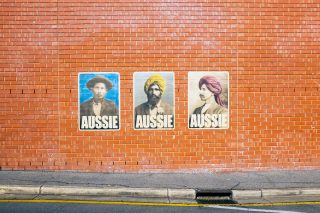Peter Drew flags the complexities of national identity in new exhibition
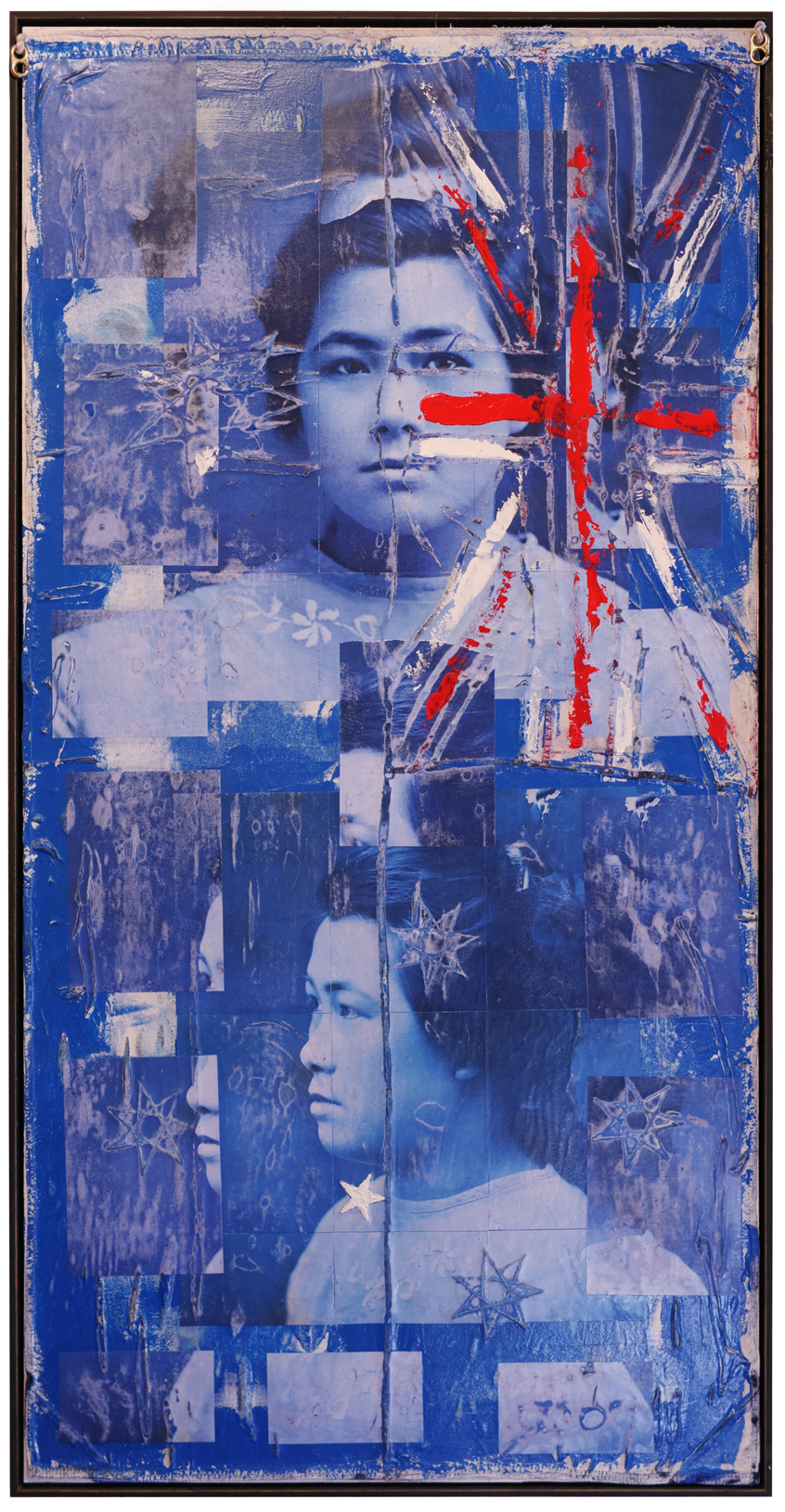
For half a decade, Peter Drew’s AUSSIE poster project has used Australia’s streetscapes to prod our perceptions of national identity. This month, he returns to a gallery setting.
While Drew has spent much of 2020 spreading a message of COVID-era comfort with his Together Soon Enough poster design, his September exhibition FLAGS 1 returns to the themes of Australian identity he has been exploring in public spaces since 2015. But this time, Drew says, there’s a fundamental difference.
“Making posters is very different to art that you put into the gallery. You can say things with posters that you can’t say in art in the gallery and vice versa,” Drew tells The Adelaide Review. “This series started out of curiosity about what I can say around the same themes as my poster works but in a gallery format.”
Each work starts with an Australian flag, which is then degraded and blended with photographs from the National Archives. These black-and-white portraits have fuelled much of Drew’s recent work, and were originally taken as part of applications to be exempted from the dictation tests that were an instrument of the 1901 Immigration Act – also known as the White Australia Policy. Cameleers, hawkers and other traders – including the family of Gladys Sym Choon – were granted exemptions because their work was essential to Australia’s growing economy.
This tension between exclusion and inclusion is continued in Drew’s newer works. “The image and the flag are meant to be in conflict with each other. There is a violence between them which I thought was interesting,” says Drew.
“The end result is that the flag is degraded, and so too in a way is the image reflecting this person’s identity.”
While acts of ‘violence’ against the flag are an inherently provocative gesture – how often is a burning flag condemned as the gravest sin that protestors can commit? – Drew says he isn’t trying to make a political statement with these 11 works. He doesn’t believe it’s the role of art to tell people what to think; it should simply reveal what’s going on.
“The problem with Australian national identity, and with all national identity, is that there is the implicit ethnic bias within the core of the nation state,” explains Drew.

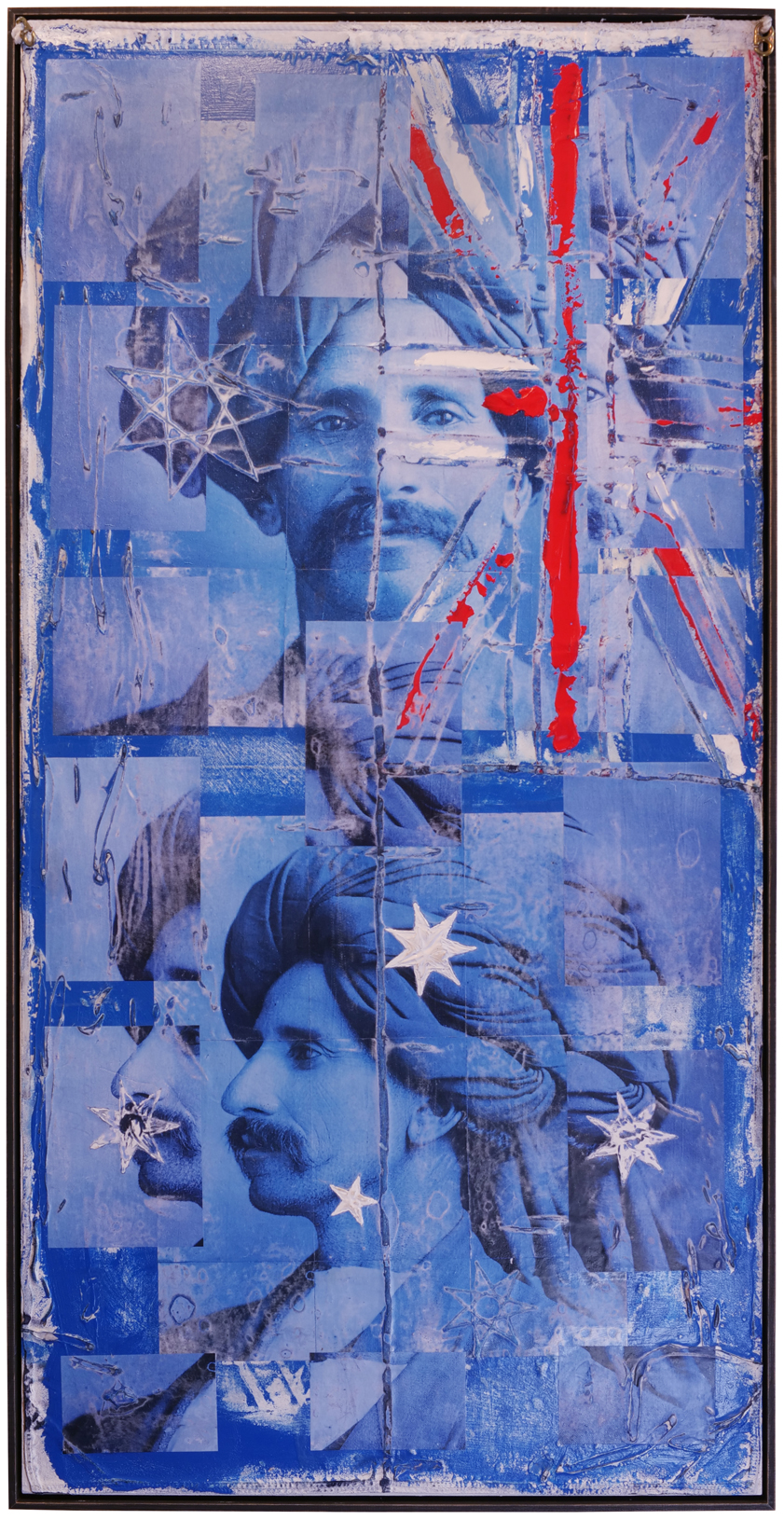
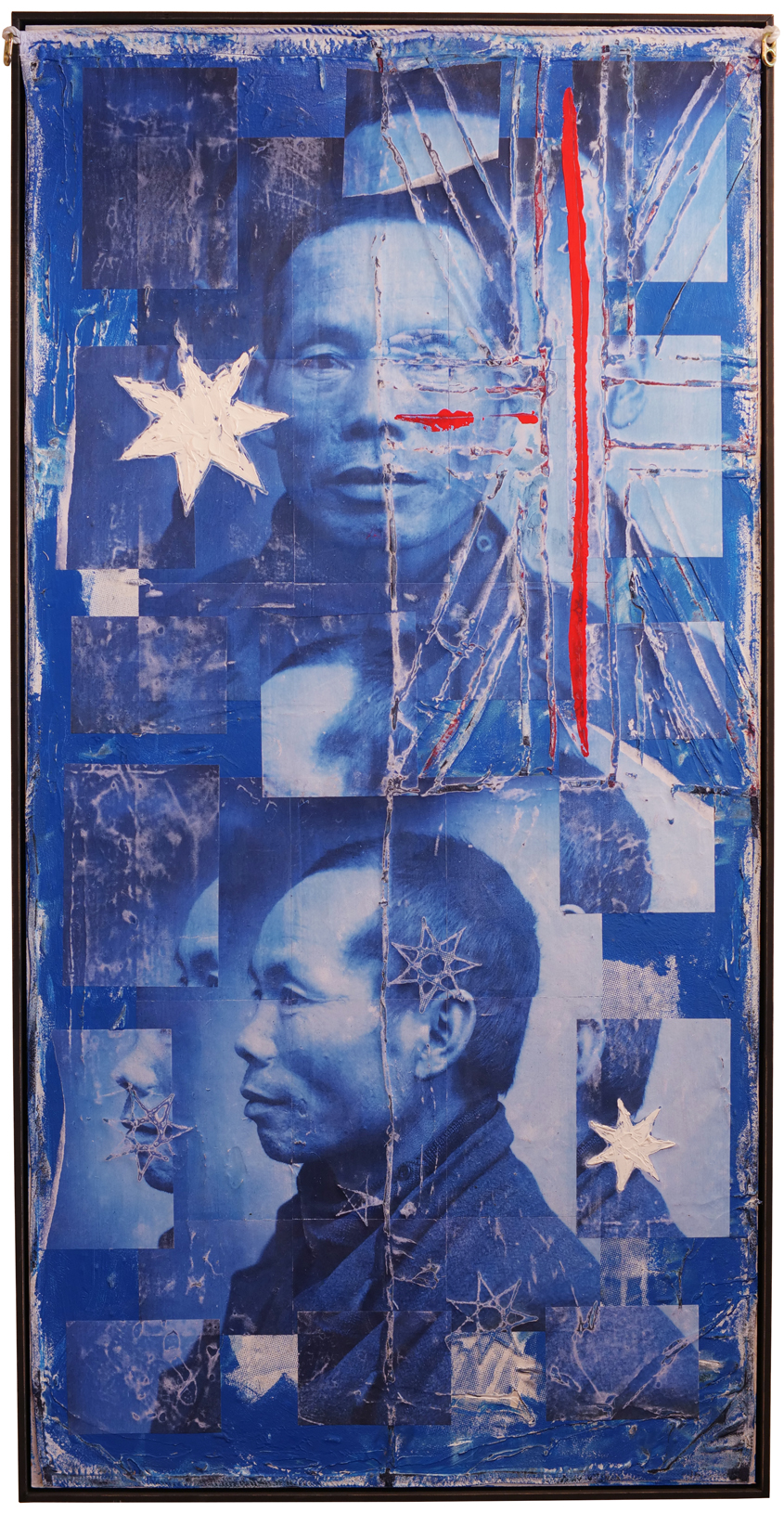
“Every nation is based on the idea that anyone could find a home within a nation and this is a problem in that it is biased towards a certain ethnicity and certain people.”
Accordingly, Drew’s FLAGS 1 doesn’t explicitly seek to wade into the ongoing debate around changing the Australian flag. Rather, it alludes to a broader point that all flags are inadequate in representing the nations they fly over.
“When you look at a flag it’s a symbol and it’s uncomplicated, it’s simple, whereas that’s not true about Australia,” says Drew. “It’s complicated and full of stories of conflict and if we thought of that when we look at the flag we would be better for it.”
By reappropriating this increasingly complex marker of national identity, FLAGS 1 offers a visual manifestation of the tensions and contradictions that underpin the mythos of the modern Australian state – and asks the audience to rethink just what it means to be Australian.
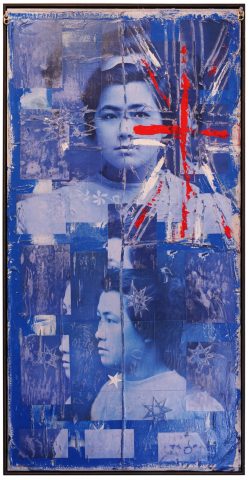
Peter Drew:
FLAGS 1
